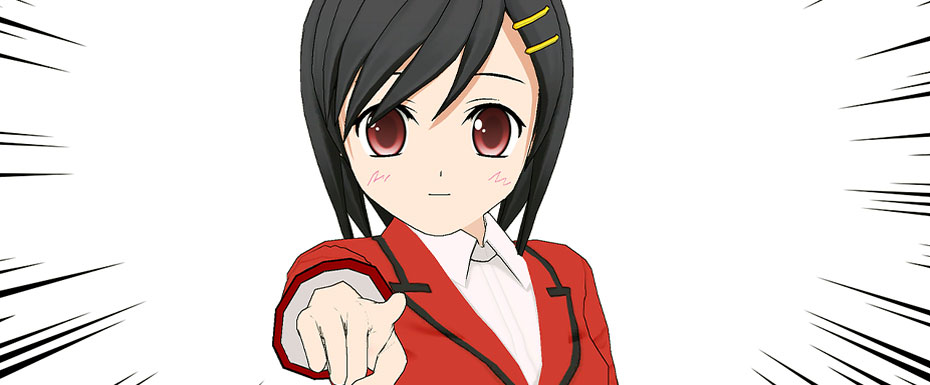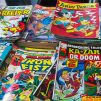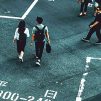
Every person has read a comic book at least once in their life and can name a few popular characters. These colorful magazines have penetrated our culture and also made us closer to understanding the cultures of other countries. For example, there are many fans of Batman, Superman, Spider-Man, and other fans of no less famous comic book heroes all over the world. The movies based on these comics occupy the first places in the movie ratings with the most successful box office collections. But speaking of manga, it is a little more complicated.
Manga heroes are also popular, but mostly in Asian countries. This is because Hollywood doesn’t make movies based on them. However, manga is also a form of artistic expression and an integral part of Japanese culture.
But like any art form, manga has its unique characteristics, and it would be wrong to compare it to comic books. In fact, it is a kind of comic book, but it is still something different and unique, just like the concept of the manga itself.
Audience
Comics have found their place among all ages: there is Robin for children, which was created in 1940, and there are also violent stories with bloodshed and insane killers for adult audiences. Of course, most comics are geared toward teens, but finding something for your age will be more than possible.
Interesting Fact

The concept of manga itself was created centuries ago, and it looked quite different from its modern version. Its creation was influenced by the military, which was able to see this genre as a way to influence the masses and instill the right political ideas. Also, the development of manga as a genre was partly affected by European and American culture. Modern manga emerged after World War II and caused a revolution in art.
Differences
The main feature present in both manga and comics is the main characters, but the difference lies in the manner of drawing. In manga, the author tries to portray the character through characteristic symbols, drawing the whole character very vividly, thereby deliberately conveying the whole inner world of the character in the drawing.
In comics, however, the central reflection of the characters is their costumes. By depicting the costumes, the artist ostensibly reflects the character’s personality and mission purpose. Although there are exceptions, for example, the famous comic book “Sin City” is not so carefully drawn – the heroes wear ordinary clothes, everything around is rather gloomy, which is not quite usual for a traditional comic book.
Equally important is the way the page is loaded with drawings. In comics, artists pay close attention to the environment, painstakingly drawing buildings and rooms. In manga, by contrast, the environment can be neglected unless the storyline requires it. For example, to use abstraction or patterns, sketch a rough outline of buildings. That’s why one page of manga can be read faster than one page of an American comic book.
Everyone is accustomed to the fact that Japanese manga and anime have their main signature – drawing big eyes. Although in fact, not every author draws in a style that implies big eyes. Big eyes symbolize innocence and openness, which immediately explains why manga artists endow villains with small and cunning eyes.
In comics, artists have the same tendency, but anatomically characters are closer to the correct proportions of human appearance, so they look more realistic than the manga characters. The body is no less important than the face: the heroes are drawn muscular, slender, and in some sense idealized, as if to show the reader that there is something to strive for.
In contrast, in manga the protagonists can be anything they want: highly attractive, unremarkable, frightening, ugly, but amazing on the inside. The Japanese don’t create such a cult of appearance as the Americans. Since their manga are for all ages, the main heroes in manga for children are children, for teenagers – middle and high school students, for adults – adult men and women or teenagers.
Manga also often uses the wrong angles to convey a character’s emotions in a given situation or introduce something overly exaggerated to make the reader understand what is going on. For example, it might be a widely open mouth, one that fits several hamburgers stacked on top of each other, or wide-open eyes with small pupils that are about to fall out-all very close and detailed, which makes this art exceptional.

Character Story
In comics, the character is the most important element. They can exist outside of a specific story. That is, there can be several stories connected to the same character and intersecting with other characters. In manga, this is forbidden – one character has only one unique story. For instance, Naruto’s goal is to become Hokage, Luffy wants to be the Pirate King, and Eren’s aims to kill all the titans. It traditionally has one goal, one mission, one plot. The characters rarely cross each other, except in the specials, which have nothing to do with the main plot.
Readability and Publishing
Also, we should not forget the main feature of manga, its peculiarity of reading. Comics always read like books – from left to right – but it doesn’t work the same way with manga. Unless, of course, you want to get deliberately confused.
Original and proper manga should be read from right to left and printed differently from regular or comic books. The cover and the beginning are where books usually have a short description, and the end is where the book has a picture or cover.
The format of comics and manga is also a unique thing. Comics are printed in magazine format with a thin colored cover, and 90% of manga are published in black and white, so it’s only possible to guess what color the characters are from the colored covers and inserts.
As for buying, comics are sold in specialty stores and on the Internet. In one edition, you can read one story.
You can read one story in one edition. Meanwhile, manga is published in a single chapter in a specialized magazine that prints several other works as well. So one edition of a manga magazine, which is more like a phone book, can consist of a dozen different manga from different authors. Characters rarely intersect with each other, except for special episodes that have nothing to do with the main plot.





